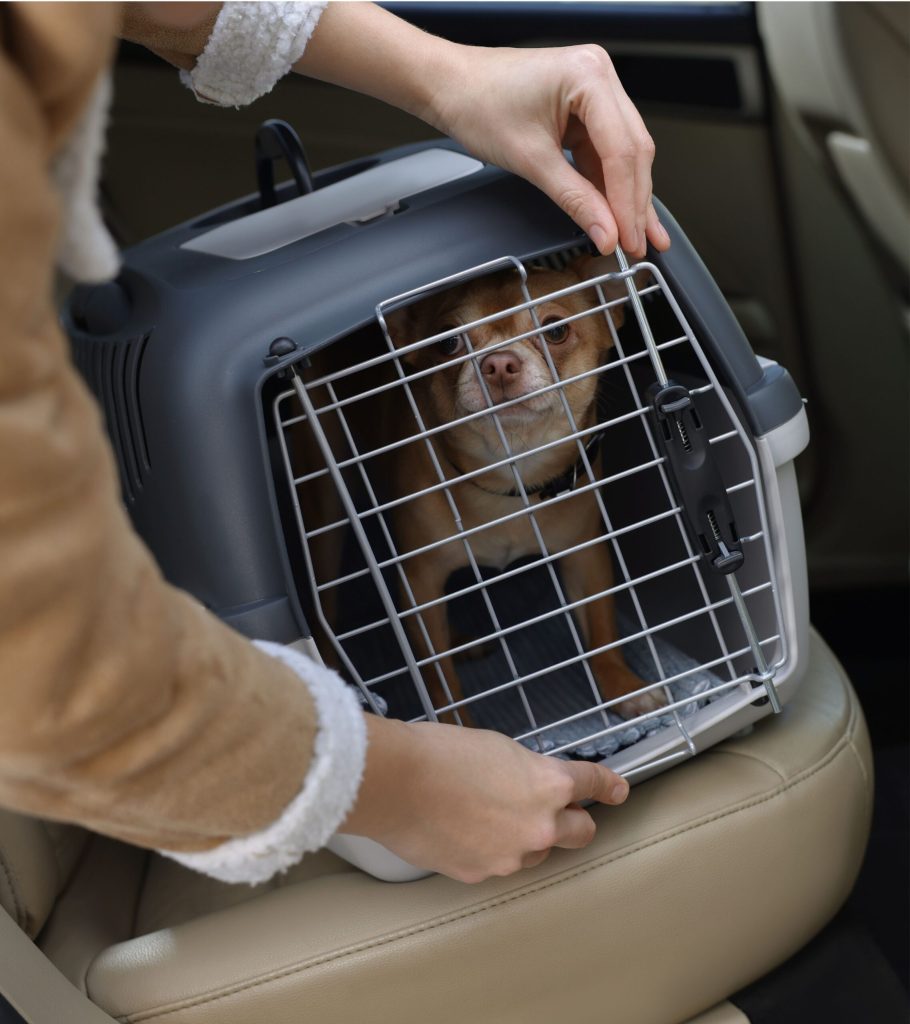Behavioral Changes during Adoption: How the Transition to a New Home Affects Dogs and Cats

Understanding Behavioral Changes During Adoption
Adopting a pet is a joyous occasion, but it also marks a significant transition for dogs and cats. When animals are placed into a new home, their behavior can change dramatically due to unfamiliar surroundings and experiences. Understanding these behavioral shifts is vital for ensuring a positive experience for both the pet and the owner.
Key changes to observe include:
- Anxiety and Stress: New environments may cause dogs and cats to feel anxious or insecure. For instance, a previously sheltered dog might display signs of fear, such as trembling or barking at normal household noises. On the other hand, a cat that has spent time in a shelter may hide under furniture as a protective measure.
- Changing Eating Habits: An adopted pet might eat less or more than usual, reflecting their emotional state. A stressed pet may refuse to eat altogether, while another might indulge excessively as a coping mechanism. It’s not uncommon for new pet owners to find their furry companions barely nibbling on food at first before gradually returning to a more regular eating pattern.
- Increased Isolation: Some pets may withdraw initially, seeking solitude while they adjust. This behavior can manifest in a desire to retreat to quiet corners of the home. For example, a new dog might prefer lying in a secluded area rather than joining the family during gathering moments.
- Playfulness and Affection: Over time, as they feel more at home, pets may display affection and engage in play. A shy cat may transform into a playful companion, chasing toys and eagerly purring during petting sessions. Dogs, too, often exhibit increased enthusiasm for playtime, a sign they are comfortable in their new environment.
Such behavioral changes are normal and can serve as indicators of the pet’s adapting process. Recognizing these signs can help new owners provide support and stability, facilitating smoother transitions. For instance, offering a quiet space with soft bedding for a new cat can encourage exploration at their own pace, while introducing toys gradually can help dogs feel more secure.
Additionally, understanding what influences these behaviors—from past experiences to individual personalities—allows for better integration into family life. Pets that have experienced trauma may need extra patience and time, while those with a more sociable background may adapt more quickly. By keeping detailed records of their behavior, owners can better appreciate their pets’ journey toward comfort and security.
As we delve deeper into how the transition to a new home affects dogs and cats, it becomes clear that awareness and patience are essential in fostering a harmonious relationship with our furry companions. Exploring these changes helps ensure a loving environment suited to their needs, ultimately enriching the adoption experience. Furthermore, resources like pet behaviorists and training programs are available to assist owners in navigating these challenges, ensuring pets thrive in their new homes.

LEARN MORE: Click here for effective training tips
The Journey of Adjustment: Early Behavioral Signs
When a pet enters a new home, the transition can be both exciting and daunting. For dogs and cats, the first few weeks of adoption can be crucial in establishing their comfort within the household. During this pivotal time, pet owners should be vigilant and responsive to the myriad of changes their new companions may exhibit, as these behaviors often reflect their emotional and psychological states.
Recognizing Signs of Discontent
One of the first behavioral shifts to monitor is anxiety. Animals are creatures of habit, and an abrupt change in environment can trigger a response of fear or uncertainty. Common signs of anxiety in newly adopted dogs can include:
- Excessive barking: Vocalizations may signal stress or a need for reassurance.
- Trembling or shaking: This physical manifestation often highlights unease or fear.
- Chewing or destructive behavior: Some dogs may chew furniture or belongings as a way to cope with their anxiety.
Similarly, cats might respond by hiding or exhibiting aggressive behaviors, especially if they feel cornered. Understanding these signs allows owners to take proactive measures, creating a safe space for their pets where they can retreat and feel secure.
Impact on Social Interactions
As pets adjust to their new settings, their social behaviors may also change dramatically. Dogs that once thrived in social environments may suddenly retreat, showing reluctance to engage with their new family or other pets. This shift can be disconcerting for owners hoping to bond quickly with their adopted friends. Creating a gradual introduction plan is essential; allowing pets to acclimate at their own pace can foster newfound confidence and reduce the likelihood of defensive reactions.
On the feline side, cats are notoriously independent creatures, but they can also become reclusive during the transition. Many newly adopted cats will seek refuge in small, concealed spaces, signaling their need for safety. Owners can facilitate smoother integration by maintaining a calm atmosphere and limiting overwhelming stimuli, such as loud noises or frequent visitors.
Adjusting to New Routines
Another significant change that pet owners might observe is an alteration in their new companion’s eating habits. A shift in appetite can be common, whether that means refusing food altogether or abruptly overeating when feeling insecure. Establishing a consistent feeding routine is recommended to help animals acclimatize more rapidly, while also monitoring their reactions to different types of food. Keeping a close eye on their intake and energy levels can illuminate any underlying issues, prompting owners to consult with a veterinarian if concerns persist.
In conclusion, while the journey of adoption often brings joys, it also comes with a wealth of challenges as pets navigate their new environment. Awareness of the behavioral changes that accompany this transition is essential for fostering a harmonious existence in the shared household. By establishing a nurturing and patient approach, new pet owners can support their furry companions, ultimately leading to a fulfilling relationship built on trust and affection.
Understanding Behavioral Changes in Pets During Adoption
The transition to a new home can be both an exciting and challenging time for dogs and cats alike. When pets arrive in a new environment, they experience a whirlwind of emotions that can lead to notable behavioral changes. Understanding these changes is crucial for pet owners to facilitate a smooth adjustment period.
Factors Influencing Behavioral Adjustments
Pets, particularly those who have been in shelters or foster homes, may exhibit signs of stress such as withdrawal, excessive barking, or even aggression. Environmental factors play a significant role in these behaviors. A new home means new scents, sounds, and routines, which can overwhelm your pet and trigger anxiety. Dogs might exhibit protective behaviors, while cats may hide to cope with their new surroundings.Moreover, the emotional state of the pet can greatly influence their actions. Many pets form strong attachments, and moving to a new home can disrupt this bond, leading to behaviors such as clinginess or separation anxiety. It is essential for pet owners to recognize these signs and respond with patience and understanding.
Establishing a Comfortable Environment
Creating a safe and welcoming space is vital for easing the transition. Make sure to provide a designated area where your pet can retreat and feel secure, complete with their favorite blankets and toys. Gradually introducing them to different areas of your home helps them acclimate without becoming overwhelmed. Incorporating consistency in feeding and walking routines can instill a sense of normalcy and stability. Engaging in positive reinforcement training can further enhance the bond between pet and owner while promoting desirable behaviors. As you navigate this new chapter in your pet’s life, remember that patience and positive interactions can greatly influence their behavioral transformation during this critical phase.
Recognizing Signs of Adjustment
As pets settle into their new homes, owners should remain observant of any behavioral shifts. Gradual improvements, such as increased curiosity, playfulness, and social interactions, signal that your pet is adapting well to their new environment. It is important to foster an atmosphere of trust and safety, allowing your furry friend to thrive and revel in their new life with you. For many pet owners, the journey of adoption is filled with both challenges and rewards. By understanding the complexities of behavioral changes during this transition, you can ensure a harmonious and fulfilling relationship with your newly adopted dog or cat. Embrace the journey and invest time in building a nurturing connection unique to your new family member.
| Behavioral Changes | Importance for Pet Owners |
|---|---|
| Anxiety and Stress | Recognizing signs can help in providing comfort and support during the transition. |
| Curiosity and Exploration | Encouraging positive exploration helps pets feel at home quicker and builds trust. |
DIVE DEEPER: Click here to learn essential socialization tips
Behavioral Expressions of Affection: Building Bonds
As the initial period of adjustment progresses, pet owners may begin to witness significant behavioral changes that indicate their new companions are starting to feel at home. For both dogs and cats, developing trust and affection can be a gradual process, but certain signs can reveal positive changes in behavior that suggest a growing bond. Recognizing these behaviors is crucial to establish a lasting connection.
Indicators of Comfort and Trust
For dogs, behaviors such as approaching their owners for attention, a wagging tail, and relaxed body postures are clear indicators of comfort. When a dog willingly makes eye contact or rolls over to expose their belly, it is a strong signal that they view their adoptive owner as a source of safety and affection. These actions showcase trust, paving the way for deeper companionship.
In contrast, cats, while often perceived as more aloof, display their affection through unique behaviors. A cat may engage in head-butting or kneading soft surfaces, which are both distinctive ways for felines to exhibit their contentment and affection. Additionally, if a newly adopted cat seeks out their owner rather than hiding, it signifies that they are beginning to feel secure in their new environment.
Playfulness as a Social Connector
Another remarkable change that can indicate a dog or cat is settling in is their inclination to play. Engaging in playtime can be an essential part of building trust and camaraderie. Dogs that were once hesitant may become enthusiastic in retrieving toys or even initiating play with their owners. This newfound playfulness not only fosters interaction but also serves as an outlet for their energy, promoting physical and mental well-being.
Cats may also exhibit playful behaviors, such as pouncing on toys or chasing after objects, which are crucial for their psychological health. These playful activities can act as a bridge to connection, reinforcing the bond between pet and owner while providing engaging stimulation for the animal.
Attention to Body Language
Understanding the intricate body language of dogs and cats can enhance the pet owner’s ability to decode emotional states. For instance, a relaxed posture in dogs can be characterized by a loose stance, an open mouth, and soft eyes, while signs of contentment in cats typically include slow blinking or a gently twitching tail. Pet owners should be observant of these signals, as they can indicate a level of comfort and willingness to engage.
Conversely, if an animal displays signs such as pinned back ears or a lowered tail, it may reflect stress or discomfort. Recognizing these cues during the transition period is essential in adjusting interactions and ensuring a supportive environment that respects each pet’s individual needs.
The Role of Routine in Behavioral Stabilization
Establishing a consistent routine can play a pivotal role in stabilizing behavioral changes during the adjustment phase. Animals thrive on predictability, and knowing when to expect meals, playtime, or quiet time can help to alleviate anxiety. Additionally, providing designated spaces such as cozy beds or secure hiding spots for cats can encourage them to explore their surroundings at their own pace, further contributing to their overall sense of security.
Moreover, gradual training and positive reinforcement can be incorporated into routines to facilitate better adherence to household rules. These practices not only prevent behavioral issues but also reinforce positive interactions, setting the groundwork for a harmonious living arrangement.
DISCOVER MORE: Click here for valuable pet adoption resources
Conclusion: Understanding Behavioral Changes During Adoption
The transition to a new home can be an emotional and transformative journey for both dogs and cats. Throughout this process, pet owners play a crucial role in facilitating an environment that promotes trust and affection. By recognizing the signs of comfort, such as relaxed body posture in dogs and head-butting in cats, owners can pinpoint moments of connection that strengthen their bond with their new companion.
Moreover, the inclination to play serves as a pivotal tool for bridging the emotional gap between pets and their owners. As animals begin to engage in playful interactions, it not only enhances their mental well-being but also helps create a shared experience that promotes attachment. Understanding the subtle body language of pets is essential, as it provides insights into their emotional states, allowing for better adjustments in training and routines.
Establishing consistent daily schedules can significantly contribute to stabilizing behavioral changes during this transition period. By creating a predictable environment filled with love and understanding, pet owners can substantially alleviate their new pets’ anxiety. As pets become accustomed to their new surroundings, both owners and animals can enjoy a rewarding journey of companionship.
In conclusion, behavioral changes during adoption are a vital aspect of welcoming a new pet into the home. Observing these developments not only enhances the bond between human and animal but also fosters a loving and supportive atmosphere that is essential for long-term happiness. Adopting a pet is not just about giving them a new home; it’s about nurturing a dynamic relationship filled with trust and affection that will last a lifetime.



